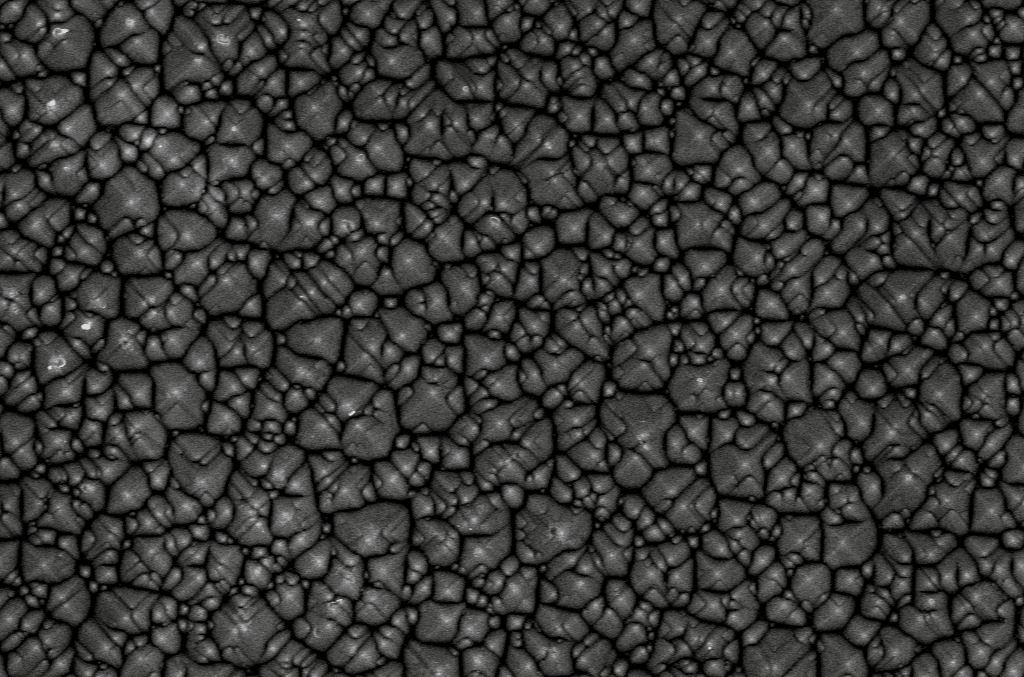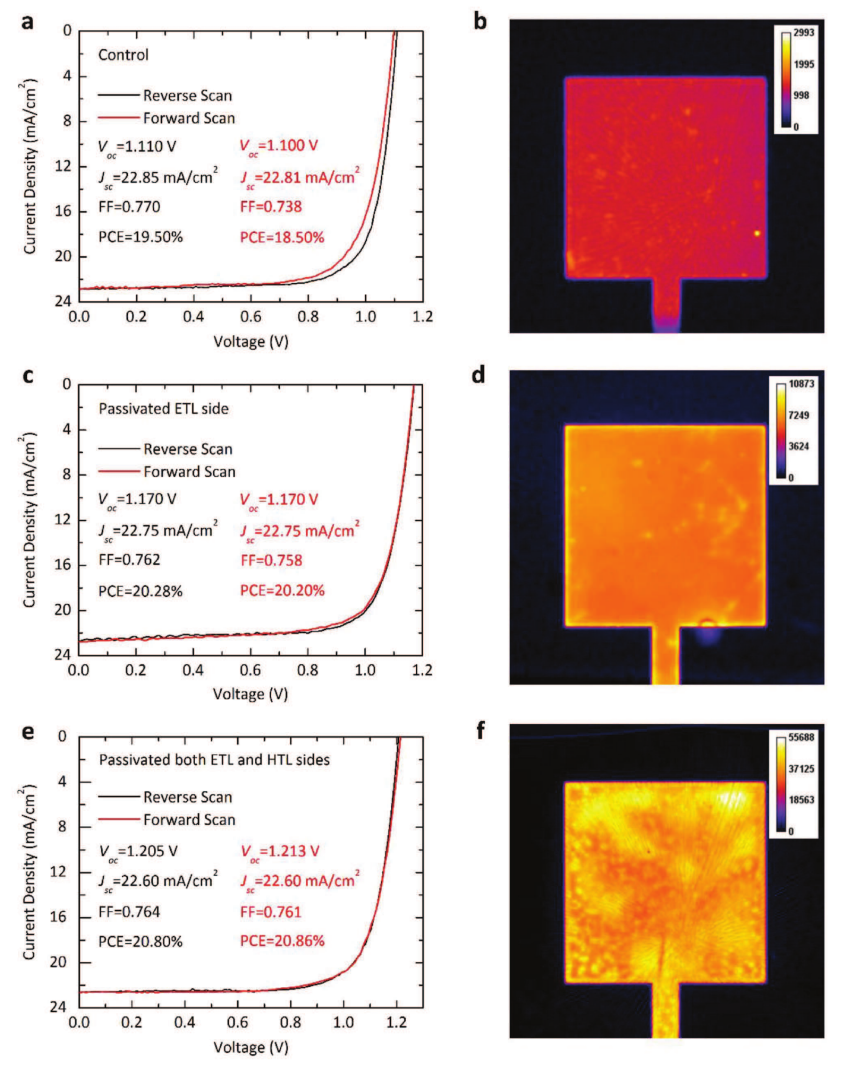


16 September, 2018
The performance of state‐of‐the‐art perovskite solar cells is currently limited by defect‐induced recombination at interfaces between the perovskite and the electron and hole transport layers. These defects, most likely undercoordinated Pb and halide ions, must either be removed or passivated if cell efficiencies are to approach their theoretical limit. In this work, a universal double‐side polymer passivation approach is introduced using ultrathin poly(methyl methacrylate) (PMMA) films. Very high‐efficiency (≈20.8%) perovskite cells with some of the highest open circuit voltages (1.22 V) reported for the same 1.6 eV bandgap are demonstrated.

Figure. Device performance and PL imaging. a,b) Forward‐ and reverse‐scan J–V curves of the control cell with a structure of FTO/c‐In‐TiOx/m‐TiO2/Perovskite/Spiro‐OMeTAD/Au, and its corresponding photoluminescence (PL) image. c,d) J–V curves of the passivated ETL side cell with a structure of FTO/c‐In‐TiOx/m‐TiO2/PMMA: PCBM/Perovskite/Spiro‐OMeTAD/Au, and its corresponding PL image. e) and f) J–V curves of the double‐side passivated cell with a structure of FTO/c‐In‐TiOx/m‐TiO2/PMMA: PCBM/Perovskite/PMMA/Spiro‐OMeTAD/Au, and its corresponding PL image. “Perovskite” refers to the composition Cs0.07Rb0.03FA0.765MA0.135PbI2.55Br0.45. (Peng et al., Adv. Energy Mater. 2018, 1801208)
To read the full article please click here.